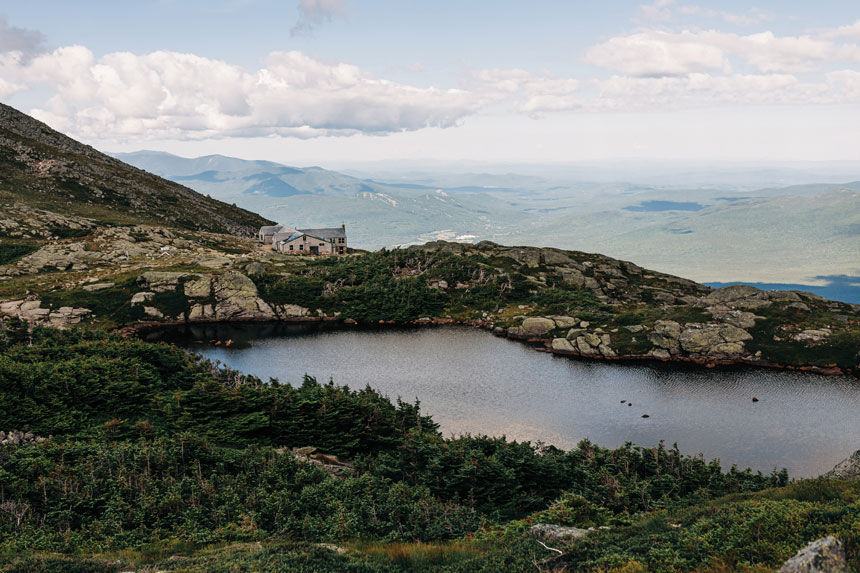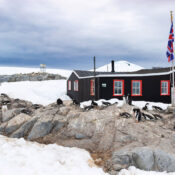Unlike us, the rain proved tireless. All day we’d walked through the steady downpour falling on New Hampshire’s White Mountains. Every few feet along the trail, my hiking companion — my mom — stooped to examine teensy wildflowers, water dripping from her wide-brimmed waterproof hat. Slate-gray mist showed no sign of lifting. Nearby Mount Washington, at 6,288 feet the tallest peak in the northeast, was secure in its mantle of fog. Though we planned to spend that night in an alpine hut famed for its aerie-like perch and lofty views to match, by midafternoon I was dwelling on its more down-to-earth enticements: dry feet, hot cocoa, thick blankets.
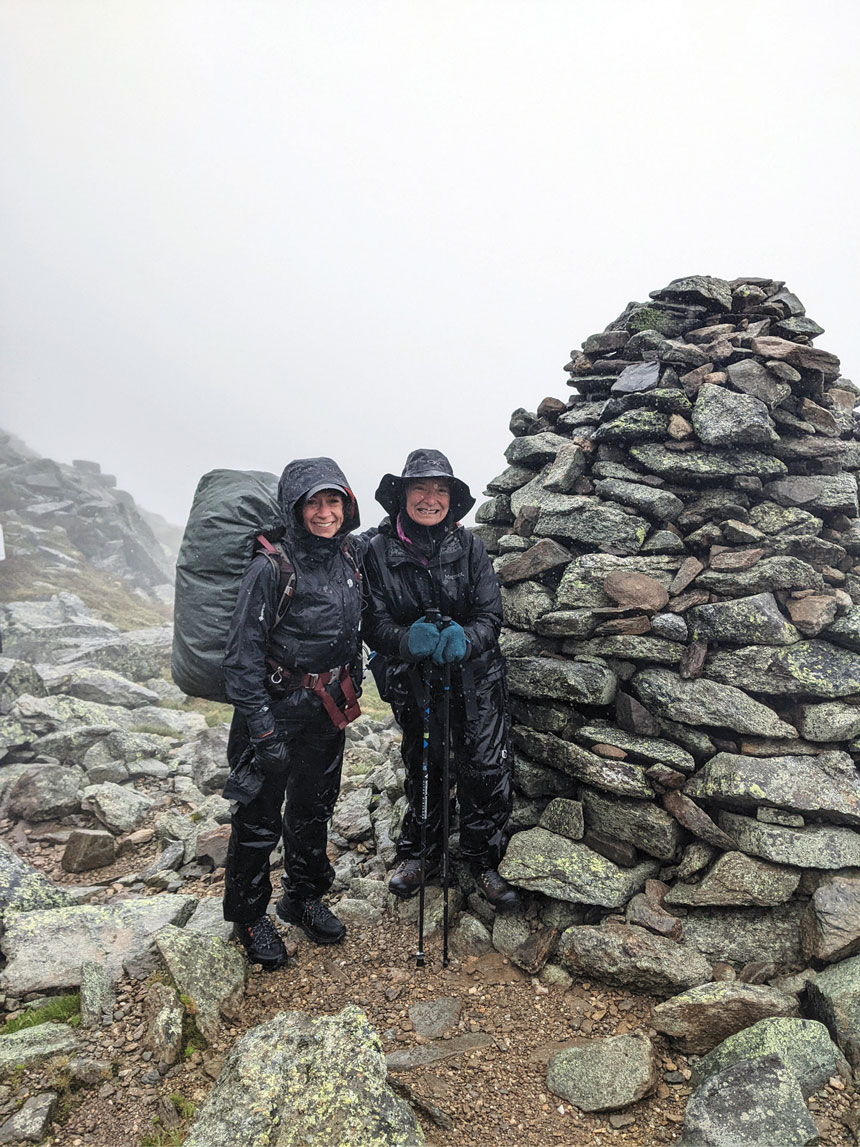
“I’m going to look at the map again,” I said, leaning over my phone to shield it from spattering rain. According to the topographic map I’d downloaded the day before, we should be standing on the doorstep of the hut. We nearly were, it turned out. A final bend in the trail revealed a low-lying refuge with forest-green trim, its old-fashioned shingles weathered to the silvery hue of New Hampshire granite. Pushing open the heavy wooden door, we saw a pink-cheeked young man with his elbows propped up on a nearby counter. “Welcome to Lakes of the Clouds,” he said, beckoning us inside. “Why don’t you come on indoors to warm up?”
One of eight historic refuges scattered across a 50-mile stretch of the White Mountains, the 1915 Lakes of the Clouds Hut takes its poetic name from a pair of nearby glacier-carved ponds that mirror the sky on sunnier days. All eight huts were built, and are still operated, by the Appalachian Mountain Club, or AMC, a nonprofit and the oldest environmental organization in the United States. Since the icy February day in 1889 when the original Madison Spring Hut received its first overnight visitors, they have offered warmth and welcome to travelers on foot, who today enjoy hot meals, dry bunkroom berths, and the company of fellow hikers.
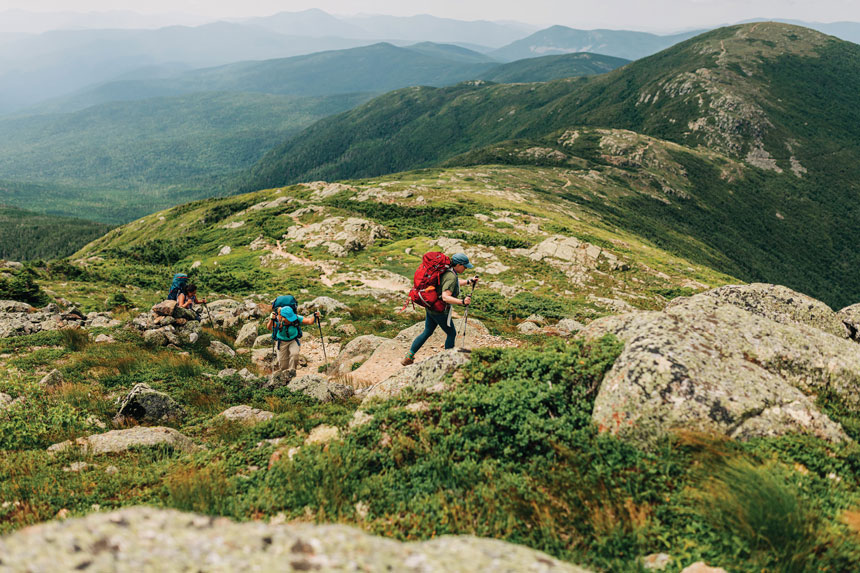
Because Lakes of the Clouds Hut is a stone’s-throw from the 2,198-mile Appalachian Trail — the longest hiking-only footpath in the world — some intrepid walkers enter it after months-long journeys from the trail’s southern terminus in Springer Mountain, Georgia. Others take a more direct route, tackling the short-but-steep Ammonoosuc Ravine Trail that climbs 3.1 miles to the hut from the valley floor more than 2,000 feet below. We decided to skip the challenging hill entirely, instead joining a half-day, plant-themed AMC walking tour starting at the Pinkham Notch visitor center on the eastern side of the White Mountains’ Presidential Range. At lunchtime, AMC guide Emily Davenport deposited us at the car-accessible summit of Mount Washington, leaving an easy, 2.9-mile descent to the hut where we’d spend the night.
In a way, we took our first steps toward Lakes of the Clouds months earlier, when New England summits still slumbered under deep snow. “Do you want to go on a hike?” my mom had said. June brings a profusion of wildflowers to the highest reaches of the White Mountains, from pretty five-petaled diapensia to low-growing mountain cranberries with blush-pink blossoms and fairy-sized fruit. An avid botanist, she hoped to see the late-spring bloom. But I heard a deeper question in her voice, too: Though she’d spent decades hiking and backpacking around the world with my father, she was recently widowed and, in her 70s, slowing down. She had begun to wonder if she’d ever again spend a starry night sleeping high in the mountains. Since the AMC huts allow hikers to set out on overnight trips unencumbered by tents, camp stoves, and other heavy equipment, she figured they were our best chance at success. I agreed to carry what little gear we’d need: warm clothes, water, sleeping bags, food for lunch. Like generations of hikers before, we hoped that America’s oldest hut system could make that overnight wilderness experience accessible.
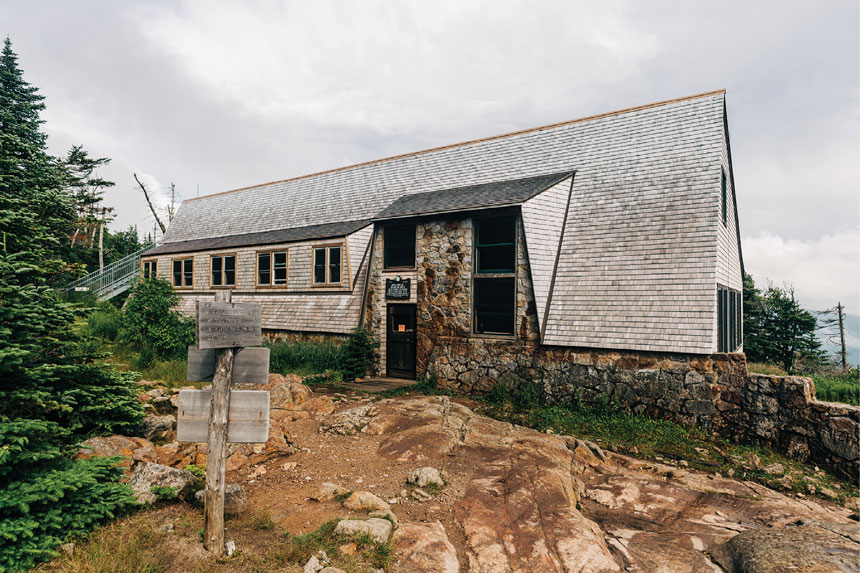
After shedding wet layers and spreading sleeping bags across mattresses in our eight-person bunkroom, we returned to the common space at Lakes of the Clouds Hut. Already, the wraparound windows revealed scraps of blue sky, along with passing glimpses of the landscape that dropped steeply to the northwest and into the forested fold of the Ammonoosuc Ravine. Hikers in wool socks and thermal tights were sipping tea at long tables, others playing cards or paging through natural history books from the hut’s small lending library.
We doctored some extra-chocolatey mugs of cocoa and joined the convivial scene. It seemed a world away from the rugged images of lone hikers in far-flung places that I grew up associating with overnight backpacking trips. But according to Silas Chamberlain, author of On the Trail: A History of American Hiking, the friendly mood prevailing at the 90-person Lakes of the Clouds Hut is a throwback to an even earlier time in the United States, when hiking was generally seen as a great opportunity to mingle.
“Hiking was primarily a social activity in the 19th century and into the 20th century,” Chamberlain explained. In the second half of the 19th century, hiking clubs sprang up across the eastern United States, serving an increasingly urbanized American population that had begun to yearn for time in the natural world. One such club was the AMC, which was founded in Boston in 1876. “They were pretty focused on making the mountains accessible,” Chamberlain said, describing organized hiking outings from the city that ranged from challenging expeditions to beginner-friendly walks. “In some ways the idea of being together was just as important as whatever the experience was,” Chamberlain said.
That philosophy extended to the huts, which were constructed, one by one, starting in 1888. While the first structures were rough shelters designed to save lives in harsh conditions, by 1911 they were serving meals; as demand grew, the huts expanded again and again. In an article for a 1961 issue of National Geographic, Supreme Court Justice William O. Douglas wrote of finding “companionship beyond price” while hiking hut-to-hut in the White Mountains, which he did many times throughout his life. “Every meal is a gay social event as well as a feast,” he wrote.
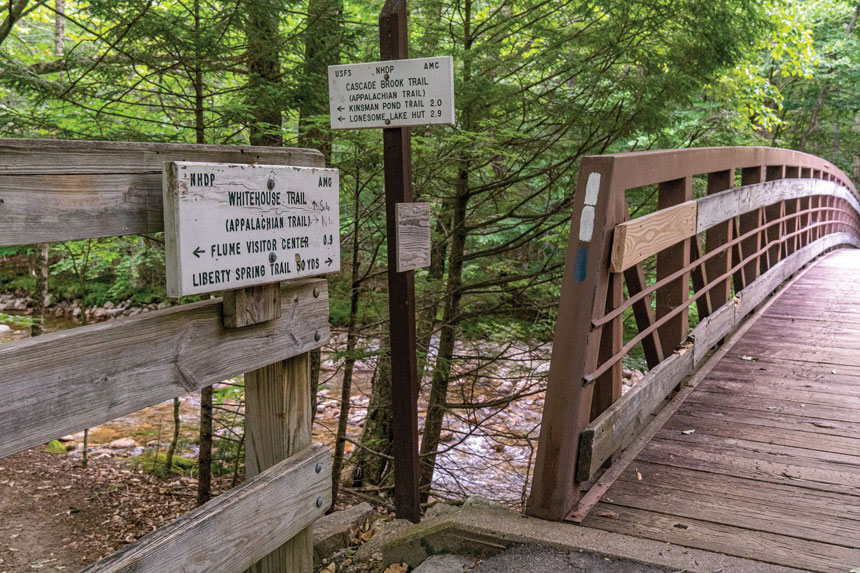
Later that evening — and following a geology talk held outside the hut — we returned to the long, communal tables for a family-style dinner prepared by young seasonal staff, who regularly carry in fresh supplies on their backs. We ate alongside avid hikers from around the country. A trio of siblings from Kentucky, their musical accents molasses-slow, told us that they reunite each summer to hike a little bit more of the Appalachian Trail, and had been working their way from south to north for years. Retirement had sped their progress significantly, they joked, since work no longer got in the way of hiking. Four women from Indiana, in their 40s and 50s, explained that backpacking was their shared summer tradition, too, recalling past trips to the summits in British Columbia, the Rocky Mountains, and California’s Sierra Nevada.
Walking under blue skies away from Lakes of the Clouds Huts the next morning, we greeted tablemates like old friends as our hiking groups leapfrogged southwest along Crawford Path, which was built in 1819 and is the oldest continually maintained recreation trail in the United States. With all day to cover around five miles, we took our time walking up a series of peaks named for American Presidents — Monroe, Franklin, Eisenhower, Pierce. We were heading toward the 60-bunk Mizpah Spring Hut. Dating only to 1964, and tucked snug into the trees, it’s the newest AMC hut site in the White Mountains. All the previous day’s ominous clouds had evaporated, leaving a landscape scrubbed by spring’s final storms. The solstice was just a few days away, and daylight seemed endless. Slow and spacious as summer itself, the afternoon stretched ahead of us.
What else could we wish to do besides swing one foot in front of the other? When we come to the mountains, all we can ask is safe passage. They make no promises, but their beauty and wonder are free to all comers, and in any weather. Like us, early AMC hikers savored the companionship of walking together. Some drew maps and gathered rocks or plants, hoping to make contributions to scientific knowledge. But many sought, and seemed to find, even more than that in America’s high places.
“We have all these wonderful early journals, written by hikers who just wax poetic about the mountains and how the mountains make them feel,” said AMC archivist Becky Fullerton, who tends to the organization’s extensive collections, which include personal accounts and summit registers inscribed with the names of 19th-century walkers. “They were also looking for spiritual renewal, which I love, because I think we still do that today.”
I went to the White Mountains to carry a small part of my mother’s load, then felt my own heart lift among summits where so many have preceded me. Hopping from rock to rock, bending toward a wildflower, or thrilling at the sound of a wood thrush calling from the forest, it was easy to believe that mountains can, indeed, offer a kind of renewal. That night at Mizpah Springs Hut we had a bunkroom to ourselves, and when I opened the window to let in the night’s cool and evergreen-scented air, I could hear a white-throated sparrow in the clearing just outside. We drifted off with the bird’s sweetly whistling song for company.
The next day brought a final downhill hike, from Mizpah Springs Hut toward the road and Joe Dodge Lodge, one of the AMC’s two White Mountains hubs for visitors. More hikers appeared as we continued from subalpine forest into lush stands of lower-elevation trees within easy reach of trailheads. We paused at a waterfall, lingering in the river-chilled air as the day grew warmer. When we reached the lodge, we’d meet an AMC shuttle bus for the return trip to our car, which we’d left on the other side of the mountains.
“I’m so happy we did this,” said my mom that evening, as I drove us along winding roads back toward our homes in Vermont. “I’m so glad I can still do this.” Before I could reply, she was asleep.
Jen Rose Smith has written for the Washington Post, CNN Travel, Condé Nast Traveler, AFAR, Rolling Stone, USA Today, andOutside Online and is the author of six travel guidebooks to Vermont and New England.
This article is featured in the March/April 2024 issue of The Saturday Evening Post. Subscribe to the magazine for more art, inspiring stories, fiction, humor, and features from our archives.
Become a Saturday Evening Post member and enjoy unlimited access. Subscribe now
